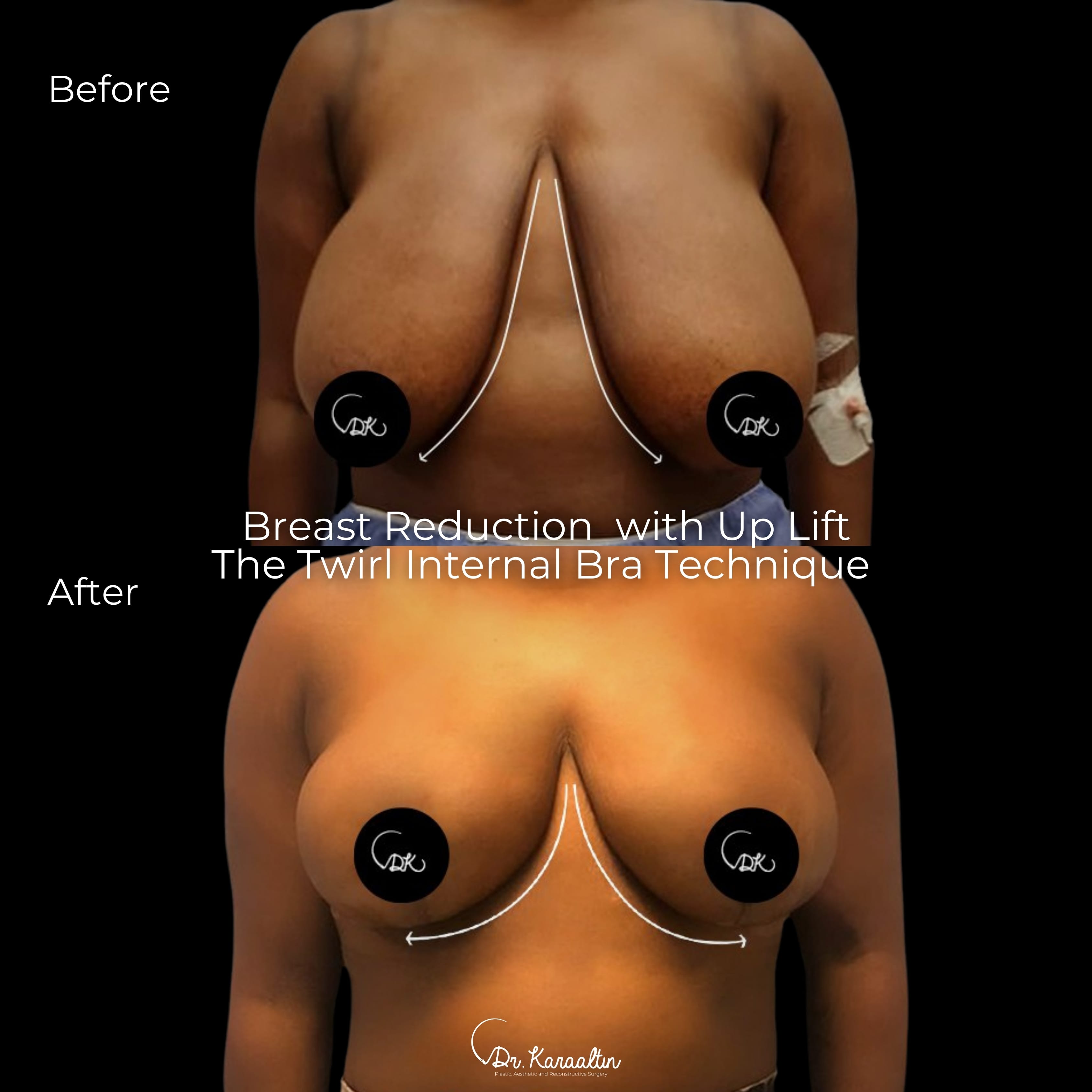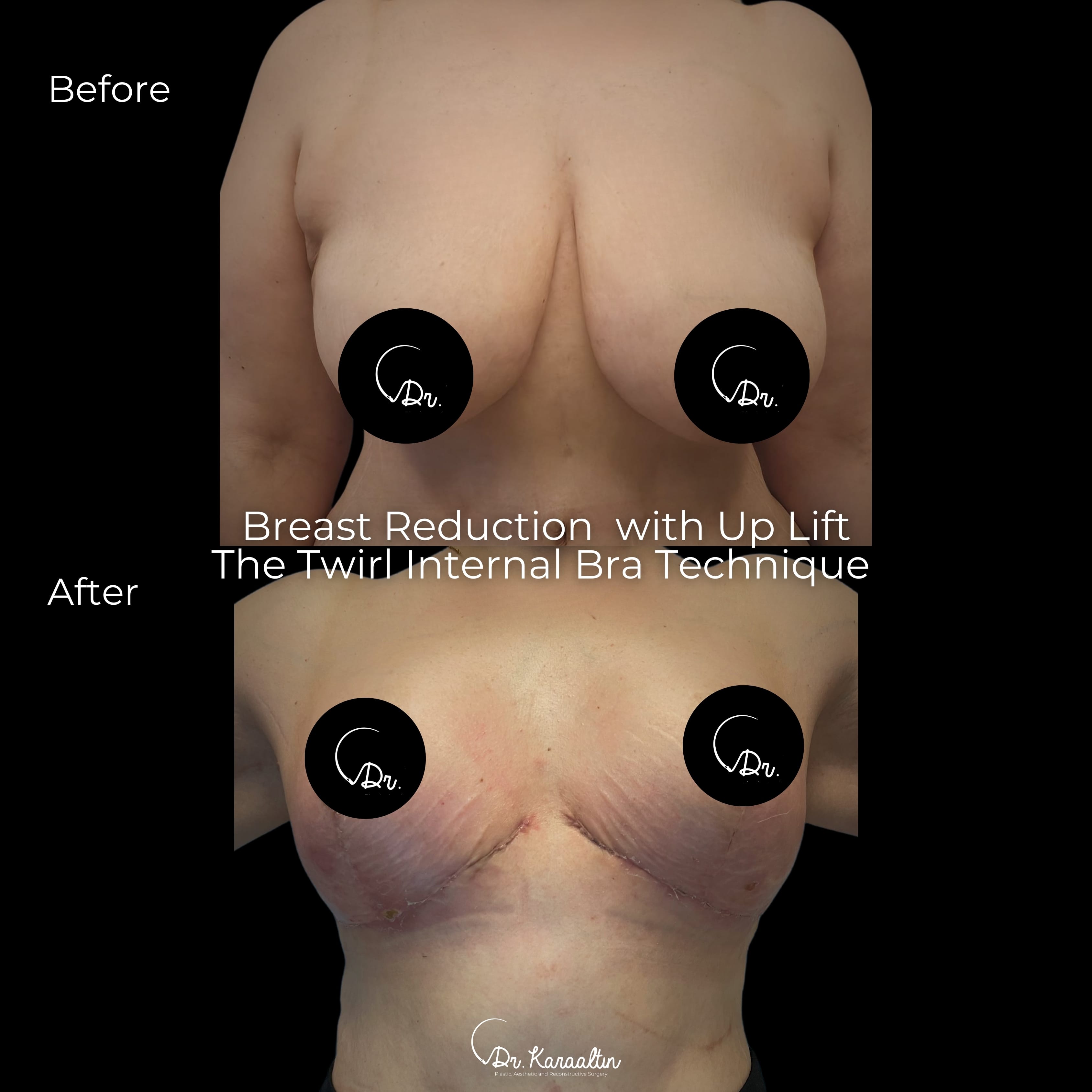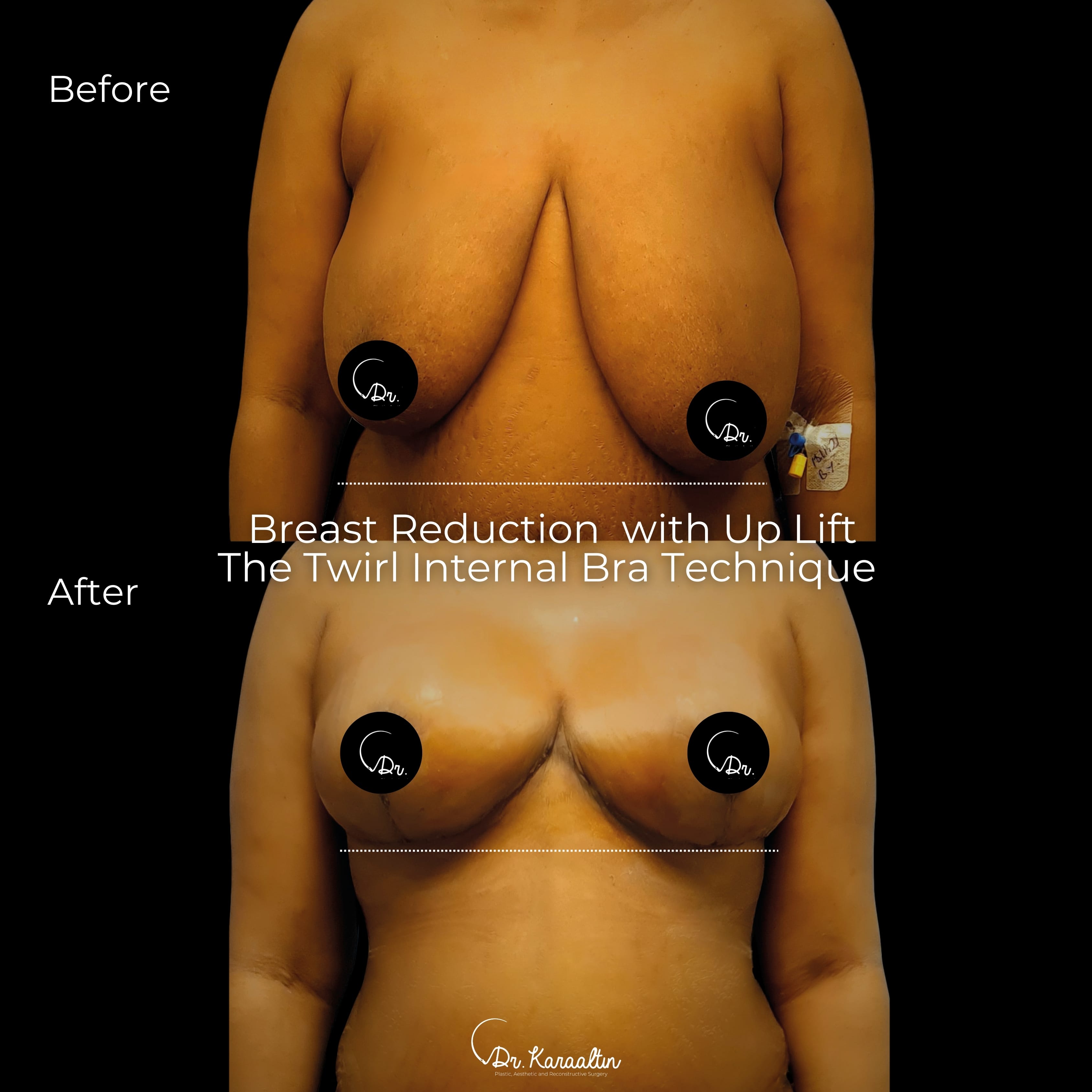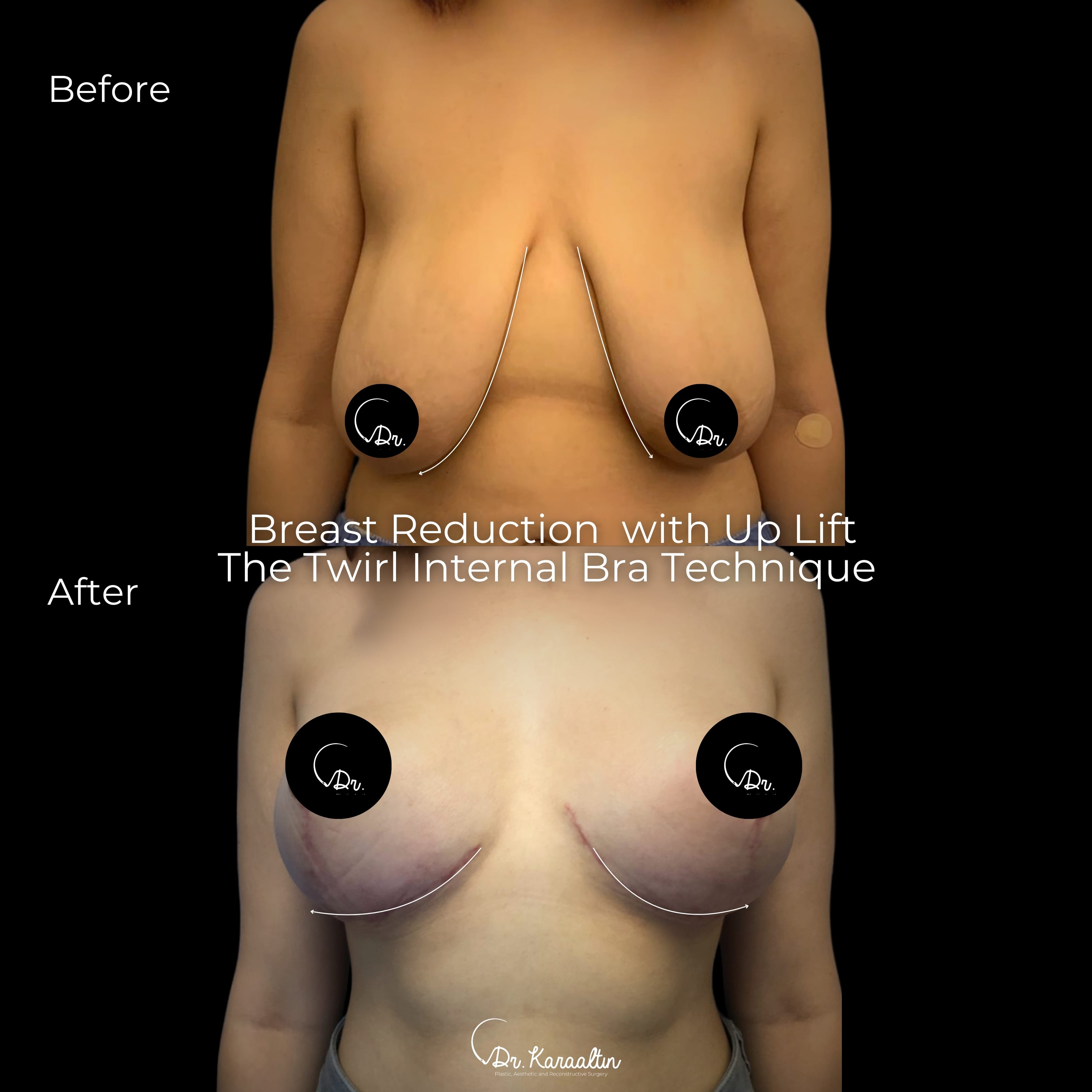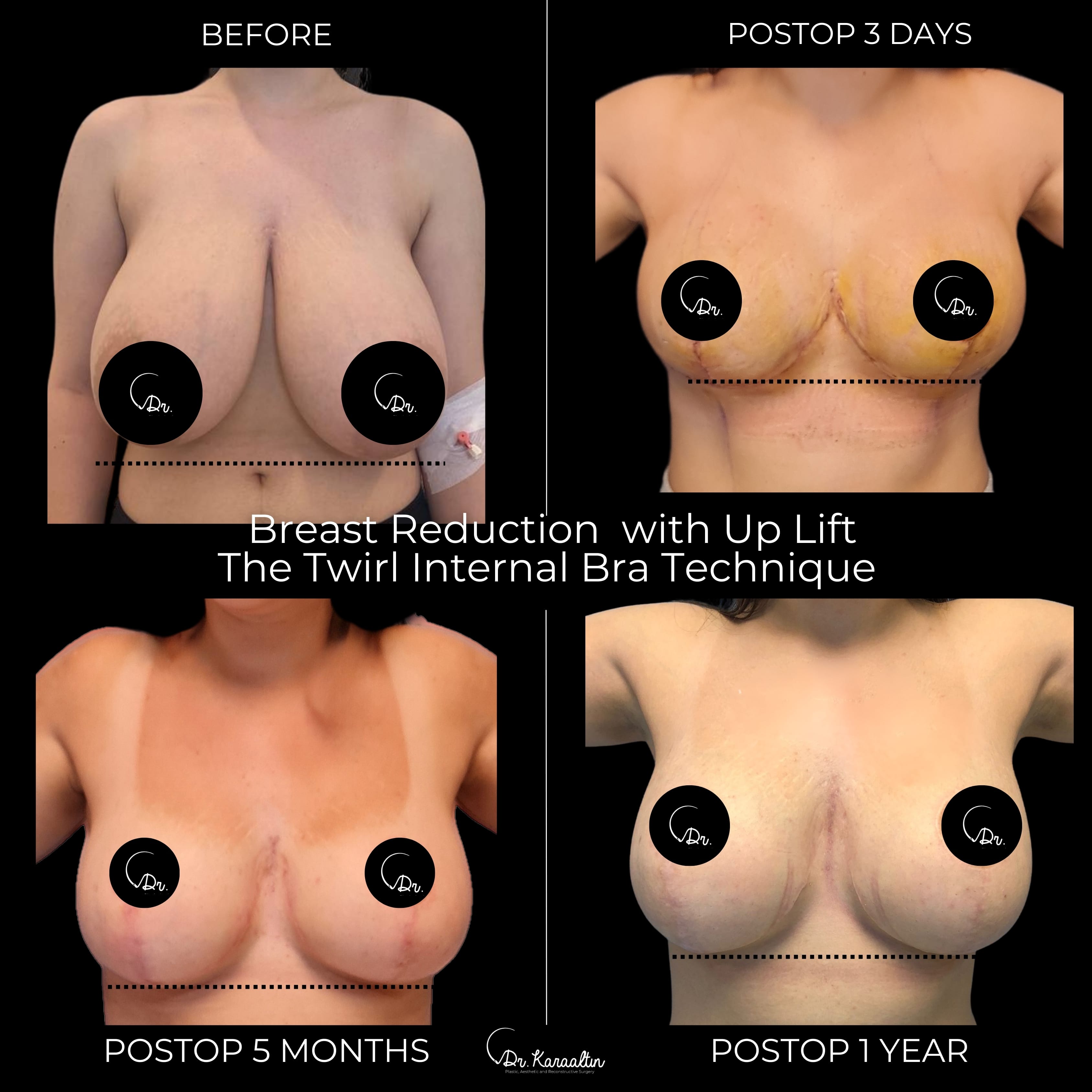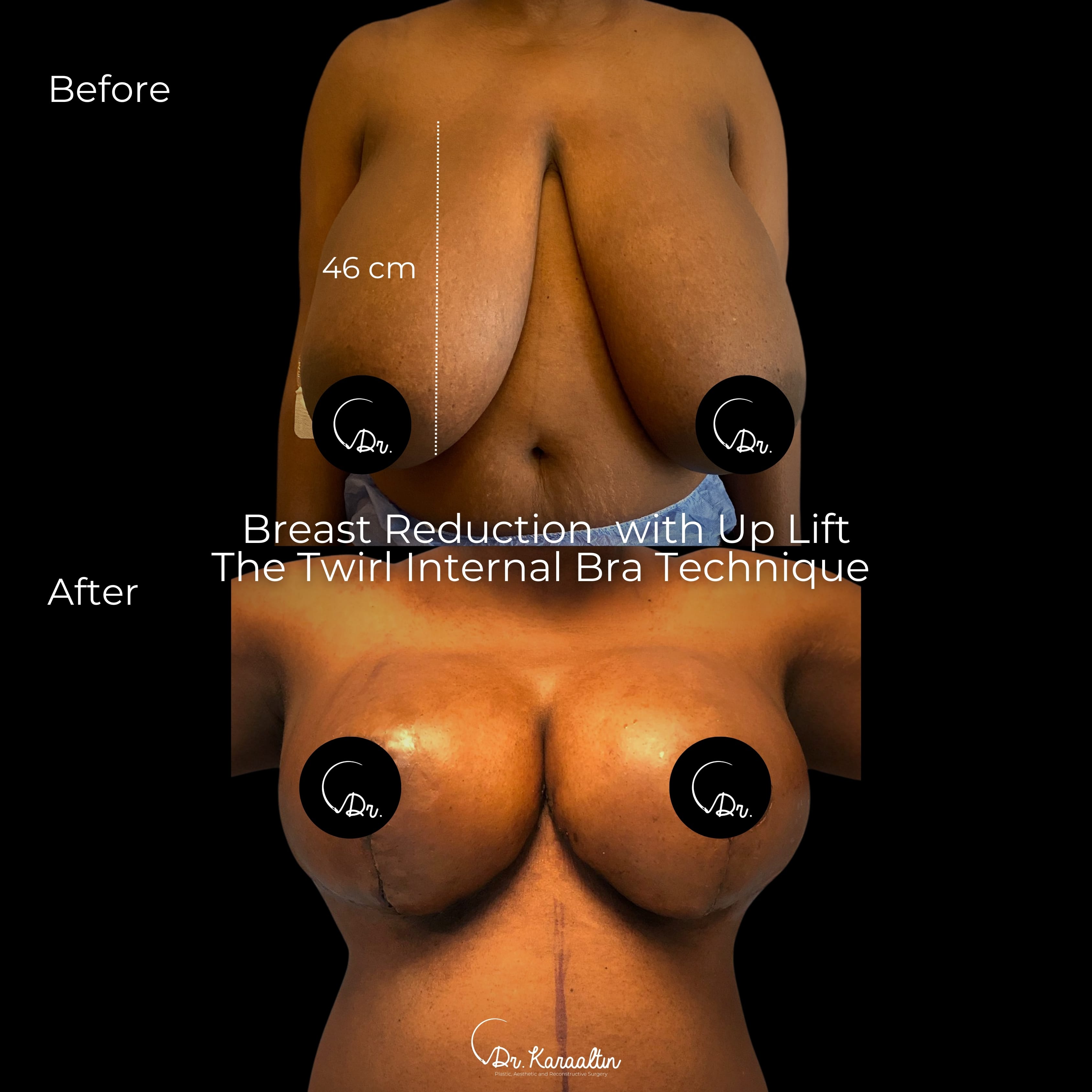
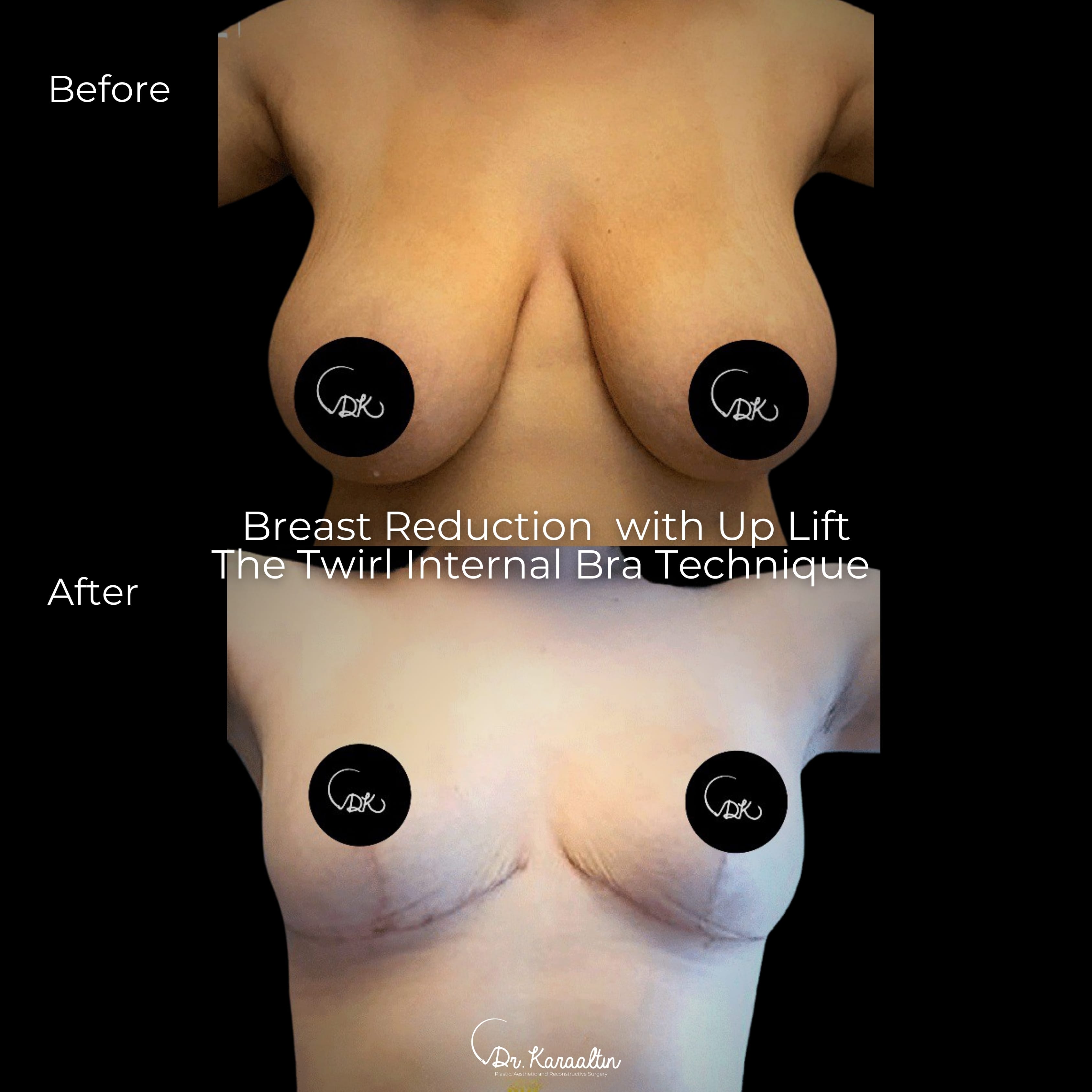
Breast reduction is a very common procedure, that helps relieve and remove the burden neck, back, and shoulder pain, and enables patients to fit better in clothing and feel better about their overall appearance. It is a surgical procedure that reduces the volume of the breast (reducing the bra size) along with up-lifting and reshaping it. Breast reduction can truly be life-changing for women who suffer from neck, back, and shoulder pain from large, heavy breasts. These large breasts often limit women’s ability to be active, to fit in certain clothing, or to feel comfortable in swimsuits or other summer outfits. Breast reduction removes some of the breast tissue resulting in a lighter breast that is less heavy and cumbersome. The nipple is also lifted to a more youthful position and the areola is re shaped and often decreased in size.
Breast reduction often involves a scar around the areola, down the front of the breast, and often extends into the fold underneath the breast (anchor shape, inverted T). Over time, these scars fade, and Dr. Karaaltın can recommend additional procedures to help reduce the visibility of these scars.
Patients who want smaller, lifted breasts could benefit greatly from a breast reduction. For patients with very large breasts, referred to as macromastia or gigantomastia, breast reduction can significantly reduce back, neck, and shoulder pain. Additionally, patients find that breast reduction helps with their overall hygiene, particularly during the hot summer months.
Patients who have undergone breast reduction with the above symptoms are some of the happiest patients of aesthetic surgery.
After your breast reduction surgery, you will be placed in a special post-surgical garment. A light dressing will cover the incisions. Swelling is typical after the surgery. You may shower 24 hours after the procedure. Dr. Karaaltın uses a multimodal pain management regimen to reduce or eliminate the need for narcotic pain medication, allowing our patients to recover quickly and feel more like themselves soon after surgery. Most of our breast reduction patients are ready to return to work within 1-2 weeks. Initially, our plastic surgeons and medical team will see you or communicate with you to ensure proper healing. Most of the swelling begins to subside in the first week or two and typically resolves by 4-6 weeks. During this period, adherence to wearing the medical bra is recommended.
The common causes of oversized breast
The duration of breast reduction surgery varies for each patient. Depending on your current breast size, the surgery typically lasts between two to five hours. In rare cases, it might take longer. The average duration is three hours. Factors such as your current breast size, the desired size, and any surgical complications can affect the length of the procedure. Dr. Karaaltın will provide a professional time estimate during your consultation to help you and any family members or friends accompanying you on the day of surgery feel more at ease.
During the procedure, Dr. Karaaltın will have assistance. A team of doctors and medical technicians will help with the removal of excess tissue, skin, and fat. They will then carefully reposition the nipple. Since you will be under general anesthesia and completely asleep during the surgery, the procedure will be completed before you even become aware of it.
Any procedure where the skin is lifted and reshaped, such as breast reduction, breast lift, or tummy tuck, poses a challenge to the blood supply of the skin. Smoking or any form of smoking significantly reduces blood flow within the skin and increases the risk of major complications, including skin loss or loss of the areola. For this reason, Dr. Karaaltın will not perform the procedure on patients who continue to smoke. Patients are required to stop smoking at least two weeks prior to the surgical procedure.
What are the Benefits of Breast Reduction Surgery?
Breast reduction surgery is beneficial for patients who are unhappy or self-conscious about their size. Breast reduction can also correct several physical problems associated with enlarged breasts, including:
Many scientific studies show a direct and indirect evidence that breast size is an important factor in the risk developing breast cancer.
Studies have also shown that larger size extremely dense breasts and large size breasts with first-degree relatives with breast cancer were each associated with at least a 2-fold increase in risk for breast cancer.
Recent studies show that the tissue removed, breast size and the change in bra size had no effect on patient satisfaction after breast reduction surgery. Being informed was found to be directly related to satisfaction. Providing sufficient information, understanding the expectations, and obtaining the desired cosmetic results is important. Although physical complaints are at the forefront in the decision of surgery, aesthetic appearance is more effective in being satisfied with the surgery. A breast the weight of which is reduced through breast reduction, and which looks aesthetically beautiful can only please the patient.
This is a frequently misunderstood concept. Traditionally, bottoming-out was the term applied when the lower half of the breast skin stretched and lengthened out after a traditional “inverted-T” style breast reduction surgery. This lower-pole stretch could give a characteristic appearance to the breast, with the following features: 1. The illusion of an overly high placement of the nipple due to lower breast mass shift 2. A vertically oblong-shaped breast or a long lower pillar length (the distance from the nipple to the lower breast fold) 3. An areola- nipple complex upward popping out from the bra The usual treatment was to surgically remove the stretched-out skin and tissue, using a horizontal ellipse pattern, placed in the infra-mammary crease area. This fixes the problem nicely, especially in women that already have a scar in the crease. Recently, the same term has been applied to certain complications after breast implant surgery, and this is where the terminology sometimes goes astray. Two situations can look like the untrained eye…. Expansion of the pocket. In this situation, the inframammary crease descends to a abnormally low position and the implant falls downward into a lower position with gravity. Look for the distance between the original incision (if it was in the crease) and the crease itself (which is moving downward) to be greater than it was originally. This is the bottoming out of the breast implant.
Despite reported relative safety and some promising results, available data indicate that meshes do not effectively prevent recurrent ptosis and bottoming out; they may not be superior to described techniques with superior pedicle and hammocks or "balcony" flaps. Well-conducted studies are yet to be conducted comparing internal bra technique to procedures with innovative autologous tissue support.
Several scientific studies report that the Internal Bra System seems to have finally become the versatile way to obtain a predictable, pleasing, long-term result in mastopexy and breast reduction.
Several studies conclude that for patients of over 50 years old and breast reductions of more than 500 g, use of a drain should be considered. Younger patients and breast reductions of < or = 500 g may not benefit from the use of drains.
The use of the superior pedicle technique for Breast reduction and mastopexy is associated with a significant increase in postoperative drainage. Surgeons using this technique should consider the routine use of drains to avoid possible complications of seroma, infection, and poor wound healing.
The Twirl Internal Bra Techniques is a special technique invented and popularized by Dr. Karaaltin from Istanbul, Turkey. The three benefits of the technique can be summarized as the following:
For more information, please visit the "The Twirl Internal Bra Technique" page in the signature section.



